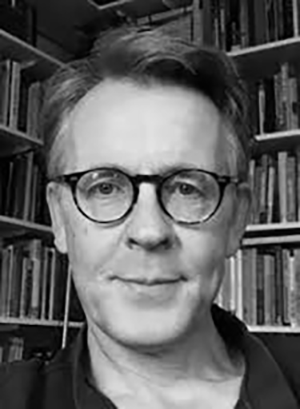August 19
14:00
Winkel Suur-Karja 8
Stop…! Motion…! Questions of life force, structure and transformation for artists and anthropologists
For any artist there is a gap between their technical achievement versus the ‘life’ of the art object which lies significantly out of their control. Organizing structural details toward bringing inert objects and images ‘to life’ is the essence of an animator’s task, but as for any artist, technique is not the only issue. For anthropologists too the contrast and combination of life and structure has been a central focus since at least the Nineteenth Century when the concern was to understand and analyze worldwide reports of life-force (mana), animism, magic, totemism and taboo. Leading figures of the time, such as Andrew Lang, showed that there were story ‘elements’ that people universally make use of to bring their magical worldviews to life. Since Lang’s time, the balance between structure versus life force has constantly shifted in anthropological thinking (and theories have changed), with the structural side elaborated by Claude Levi-Strauss, Mary Douglas and others, while existence, phenomenology and ontology—life—are stressed in more recent approaches. The rapid ‘virtualisation’ of human reality over recent decades offers new potentials for understanding this relationship. What can anthropologists learn from animators on this topic, and vice versa?

Huon Wardle
Social Anthropology
My work as an anthropologist has focused on cosmopolitanism, cosmopolitics and the Caribbean region. Between 2018 and 2021 I was Head of the Department of Social Anthropology at the University of St Andrews, formerly Director the Centre for Cosmopolitan Studies and editor of the Centre’s Yearbook in Cosmopolitan Studies. I am currently on research leave.
While my core ethnographic research has been in a lower class neighbourhood of Kingston, Jamaica, some of my recent work has looked at the changing meaning of being ‘middle class’ in the Caribbean. Newer directions of study take a historical view of creolisation exploring the early Twentieth Century mass migrations of West Indian workers to the big U.S. and British colonial projects such as the Panama Canal venture and the Amazon rubber boom. Most recently, my research has focused on understanding the ‘Windrush’ immigration scandal from a social and historical perspective.
I am interested in individuals and how they make a meaningful world, finding freedoms for themselves in a creolising setting; how they transcend cultural categories and constraints through certain kinds of cosmopolitan gesture and symbolisation. Theoretically this has led me into thinking about the ideas that go into a cosmopolitan view–openness or hospitality toward the ‘foreign’, empathy across categorical boundaries, utopian imagining and the idea of the transcendence of the immediate or ‘temporal’.
The activity is funded by the European Regional Development Fund through an ASTRA measure project “TLU TEE or Tallinn University as the promoter of intelligent lifestyle” (no 2014-2020.4.01.16-0033).